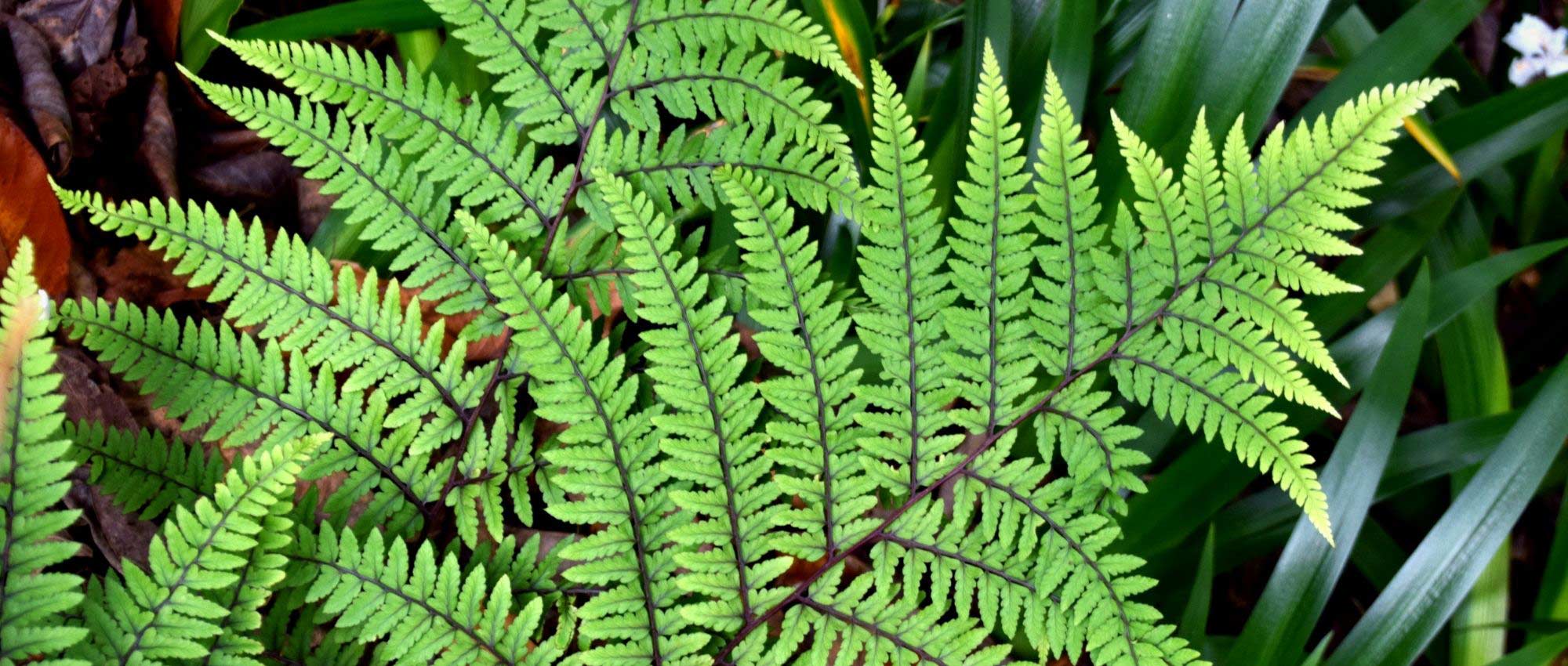
Athyrium: planting, growing, and care
Contents
Athyrium in a nutshell
- This fern is appreciated for its light, elegant, and finely divided foliage.
- Athyrium filix-femina has a lovely soft green colour and a very natural style!
- Athyrium niponicum, on the other hand, stands out with its unique hues, often silvery or purplish.
- These ferns thrive in shade or partial shade, in cool, humus-rich soil.
- They are ideal for a naturalistic garden, a graphic garden, or a zen garden.
A word from our Expert
Athyriums are deciduous ferns that feature very fine and graceful foliage. In gardens, the most commonly grown are the Athyrium filix-femina, or Lady Fern, which offers elegant light green fronds that are quite large, as well as the Athyrium niponicum, which bears small, slender triangular fronds in silvery tones. From these botanical species, original varieties are available based on their shape (such as Athyrium filix-femina ‘Frizelliae’) or the colour of their fronds. The Athyrium otophorum var. okanum is also cultivated, featuring very graphic fronds whose colour changes with the seasons, evolving between green, yellow, and purplish pink tones along the veins.
The Athyrium is an easy fern to grow, ideal for shaded corners of the garden. It is quite hardy and requires little maintenance. It thrives in fertile, humus-rich soil that remains moist. In the garden, it will find its place in woodlands, rockeries, by a pond, in a perennial bed… and even in a pot on a terrace. It integrates very easily into graphic gardens!
Botany
Botanical data
- Latin name Athyrium sp.
- Family Woodsiaceae
- Common name Fern, Athyrium, Female fern...
- Flowering none
- Height between 20 cm and 1.20 m
- Exposure shade, partial shade
- Soil type cool, rich in humus
- Hardiness down to -20 °C
Athyrium encompasses over 200 species of deciduous ferns, valued for their beautifully finely divided fronds. These are understorey plants that require a cool, shaded environment. In cultivation, Athyrium filix-femina and Athyrium niponicum are primarily found, along with the horticultural varieties they have produced. The female fern, Athyrium filix-femina, grows spontaneously in Europe, Asia, and North America. It can be found in the wild in France, in deciduous or coniferous forests. Athyrium niponicum, on the other hand, is native to Asia: it is mainly found in Japan, as well as in Korea, Taiwan, and China. Although these ferns thrive outdoors in gardens, there are also a few species of Athyrium cultivated as houseplants or terrarium plants (Athyrium spicatum, Athyrium madagascariensis…).
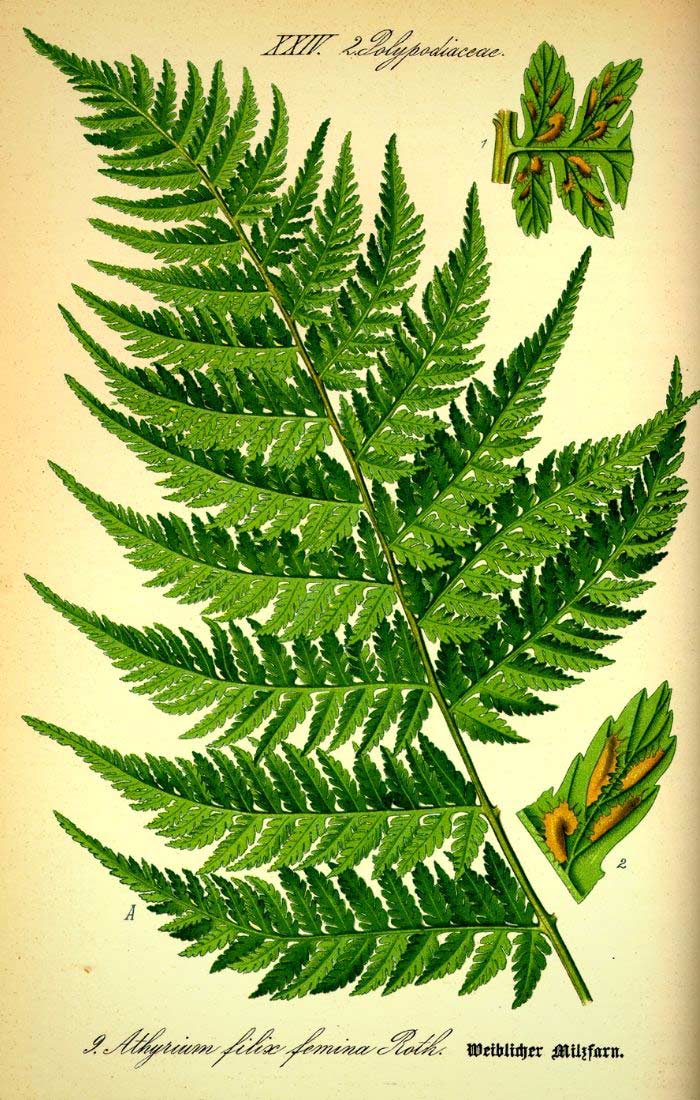
Athyrium filix-femina: Botanical illustration
The name Athyrium comes from the Greek thurion: “little door”, referring to the shape and position of the indusium on the spores, which, when mature, lifts slightly like a door hinge. The female fern is named so because of its fine and delicate fronds (its species name means the same: “filix“: fern, “femina“: female), in contrast to the male fern, which appears more stout and robust. This distinction has no relation to the sex of these ferns! As for Athyrium niponicum, its species name simply denotes its geographical origin: “from Japan”.
Athyrium belongs to the large group of Pteridophyta, which includes ferns, horsetails, and lycopods. These are primitive, very ancient plants. They predate flowering plants and were around long before the dinosaurs! Ferns are among the first plants to have emerged from water. They still maintain a strong dependence on water, which is essential for their reproduction… This is why they are primarily found in cool or moist soils!
The female fern, Athyrium filix-femina, forms a crown of arching, spreading fronds, and can reach heights of 1 m to 1.20 m. The Athyrium niponicum are smaller, not exceeding 30-40 cm in height and forming slightly more spreading clumps.
Ferns have a specific vocabulary: we do not speak of leaves but of fronds, and they do not produce flowers or seeds but spores. Thus, to reproduce, Athyrium bears clusters of sporangia on the underside of its leaves, which contain the spores. These sporangia are covered and protected by a membrane called the “indusium”. When they reach maturity, the sporangia open to release the spores they contain. Fine as dust, these spores are dispersed by the wind. They will settle on the ground and germinate in the presence of water.
The germination of spores gives rise to tiny organisms called prothalli, which resemble moss. These are the ones that bear the reproductive organs. Male gametes need water to move and fertilise female gametes, which explains why ferns primarily grow in cool, fairly moist soils. Once fertilised, the female prothallus will allow the development of a small fern in the form we know. Thus, the sexual multiplication of ferns takes time and requires specific conditions: humidity, no direct sunlight, etc.
When they appear in spring, the fronds of Athyrium are curled in croziers. They then unfold to form beautiful arching fronds, finely divided.

Athyrium filix-femina: young crozier unfurling, and spores on the underside of a frond (photos: Rror / Muriel Bendel)
In the female fern, Athyrium filix-femina, the fronds can reach up to 1 metre long, they are two to three times divided, and have a beautiful light green colour. They are borne on a short petiole, which has a few brown scales at the base. Each frond bears 20 to 30 pairs of pinnae, which are themselves divided into pinnules. Horticultural varieties offer interesting forms: in ‘Frizelliae’, the fronds are long and narrow, with the pinnae reduced to tiny fans! In the variety ‘Victoriae’, the pinnae are very fine and divided into several segments at the tip. There is also a variety, Athyrium filix-femina ‘Lady in Red’, which has red petioles and rachis! The contrast with the foliage is striking.
In Athyrium niponicum, the fronds are small, not exceeding 25-30 cm in length. They are bipinnate, twice divided, and have a beautiful triangular shape, tapering at the tip. Athyrium niponicum generally has a petiole and veins with red hues. The fronds can take on different colours depending on the varieties: black and silver in ‘Pictum’ and ‘Pewter Lace’, purplish-red in ‘Ursula’s Red’, and pink-red in ‘Red Beauty’…
There is a hybrid between Athyrium filix-femina and Athyrium niponicum var. Pictum: the variety Athyrium ‘Ghost’! It possesses both the silver colour of Athyrium niponicum and upright, spreading fronds, well-developed like those of Athyrium filix-femina. It has an intermediate size, measuring up to 60-70 cm in height.
The Athyrium otophorum var. Okanum is particularly graphic. Its fronds are beautifully pointed and have a lovely pinkish-yellow hue.
The foliage of Athyrium is deciduous: the fronds dry out in autumn and unfurl again in spring, as soon as temperatures warm up.

The fronds of Athyrium take on different shapes and colours depending on the varieties! Athyrium niponicum ‘Pewter Lace’, Athyrium filix-femina ‘Frizelliae’ (photo C.T. Johansson), and Athyrium otophorum ‘Okanum’
Read also
Ferns: growing and plantingThe main varieties of Athyrium
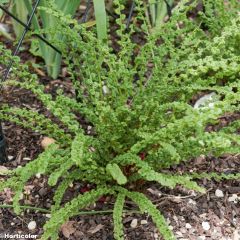
Athyrium filix-femina Frizelliae - Lady Fern
- Height at maturity 30 cm
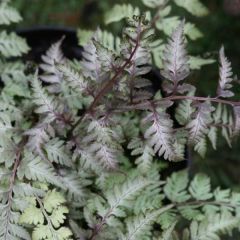
Athyrium niponicum var. pictum - Painted Fern
- Height at maturity 30 cm
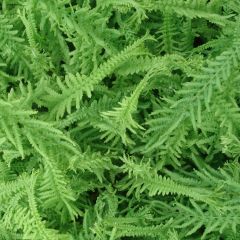
Athyrium filix-femina Victoriae - Lady Fern
- Height at maturity 90 cm
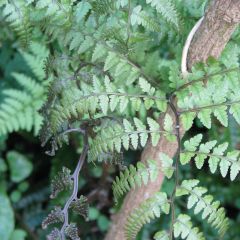
Athyrium otophorum var. okanum - Eared Lady Fern
- Height at maturity 40 cm
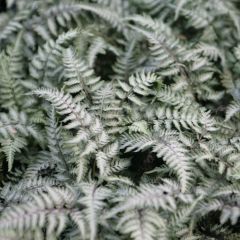
Athyrium niponicum Pewter Lace - Painted Fern
- Height at maturity 40 cm
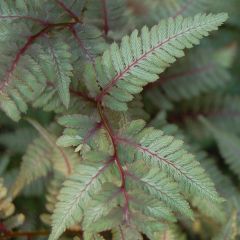
Athyrium niponicum var. pictum Red Beauty - Painted Fern
- Height at maturity 40 cm
Discover other Athyrium
View all →Available in 1 sizes
Available in 1 sizes
Available in 1 sizes
Available in 1 sizes
Available in 2 sizes
Available in 1 sizes
Available in 1 sizes
Available in 1 sizes
Available in 1 sizes
Available in 1 sizes
Planting
Where to plant?
Like most ferns, Athyrium require a shaded location! They are perfect for undergrowth, at the base of trees and bushes. The Athyrium niponicum displays more vibrant colours in the shade, while in sunlight its fronds become paler. However, Athyrium can tolerate sun if the soil remains consistently moist. We also recommend choosing a sheltered spot away from the wind.
Naturally growing in forests, Athyrium thrives in good undergrowth soil that is loose, cool, and rich in humus. Don’t hesitate to add organic matter to enrich the soil and make it lighter! Regarding pH, Athyrium prefers slightly acidic soils.
As it requires little maintenance, you can place Athyrium in a part of your garden that you keep fairly natural, where you will intervene minimally. Enjoying cool soils, it can also find a place by a pond. The Athyrium niponicum will also fit well in a cool, shaded rockery.
Athyrium can also be grown in a pot that you place in partial shade. You can create beautiful planters by combining them with other decorative foliage. We recommend the varieties Athyrium filix-femina ‘Frizelliae’ and Athyrium niponicum for their compact size.
When to plant?
You can plant Athyrium in autumn, between September and November, or in spring, around April. The most important thing is to avoid periods of frost or extreme heat, which could hinder successful establishment.
How to plant?
For a more attractive effect, we recommend planting Athyrium in groups rather than individually, or pairing them with other ferns.
- Place your Athyrium in a basin filled with water to rehydrate the root ball.
- Dig a planting hole that is two to three times the size of the root ball.
- At the bottom, add well-decomposed compost mixed with soil.
- Remove your fern from its pot and place it in the planting hole. Replace the soil around it and firm it down with the palm of your hand.
- Water generously.
- Add a mulch made from dead leaves, RCW (ramial chipped wood), pine bark…
We recommend continuing to water regularly in the weeks following planting, until the Athyrium settles in and develops its root system.
You can also grow it in a pot: plant in a mix of good garden soil, sand, and well-decomposed compost.
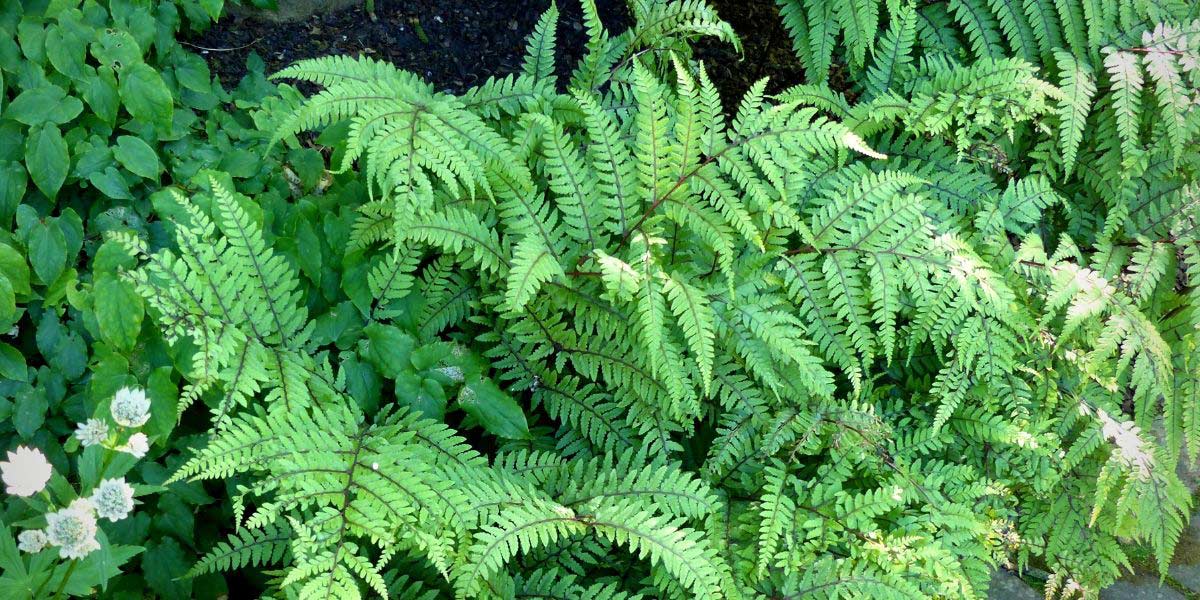
Athyrium otophorum ‘Okanum’
Care
Athyrium requires very little maintenance. It mainly needs the soil to remain moist from spring to autumn (don’t hesitate to water during dry spells!). It is rarely affected by diseases or pests.
We recommend mulching around the plant to keep the soil cool for longer, limit the growth of weeds, and enrich the soil. You can use, for example, fallen leaves or RCW.
If you are growing Athyrium in a pot, remember to repot it occasionally to refresh the substrate and give it enough space to grow. Also, in a pot, be careful not to let the substrate dry out. Watering will need to be more frequent than if you were growing it in the ground. You can also provide a bit of liquid fertiliser.
As it is a deciduous plant, its fronds naturally dry out in autumn. You can leave them on the stump for winter, as they will protect it from the cold, and then in spring, perform a clean-up by cutting these old fronds.
Multiplication
Athyrium can be propagated by division or by sowing spores. Division is quicker and more suitable if you already have a well-established clump. For propagating horticultural varieties, we recommend division, which will ensure young plants identical to the parent plant. However, sowing allows for a large quantity of ferns to be produced, and it is exciting to see the young ferns emerge and develop from spores!
Sowing
You can propagate Athyrium by collecting and sowing its spores. However, this is a delicate technique that requires patience. To succeed, it is essential to ensure a moist and sterile culture medium.
- Collect the spores that form on the underside of Athyrium fronds.
- Take a clear glass or plastic container.
- Mix potting soil with a bit of sand and place it in the container.
- Moisten the substrate, then place it in the microwave for about 10 minutes to sterilise it.
- Disperse the spores on the surface of the substrate. It is important not to cover them with soil!
- Place a clear lid on the container (for example, a glass plate, plastic wrap, or a Tupperware lid).
- Put the sowing in a bright location, out of direct sunlight, at a temperature between 15 and 18 °C.
Then, be patient. The germination of spores generally takes more than a month. You will then see a fine green film appear on the surface of the substrate: these are the prothalli. They will produce the sexual organs and give rise to new small ferns.
For more information on sowing spores, please consult our dedicated sheet.
Division of clumps
It is possible to propagate Athyrium by dividing clumps, preferably in spring. This is a simpler and quicker technique than sowing spores!
Choose a well-developed clump that has been in place for several years. Dig it up by excavating widely to avoid damaging the rhizomes and the root system. You can remove excess soil to clearly expose the roots. Divide the clump into several segments, ensuring that each segment retains some roots. Prepare the ground at a new location, plant, and then water generously.
Associating
Athyrium is ideal for a woodland garden with a very natural style. We particularly recommend Athyrium filix-femina. You can pair it with Solomon’s Seal, a shade perennial with beautifully arching stems adorned with small white bells. Also consider Brunnera, Epimedium, or Corydalis… Don’t hesitate to incorporate other ferns: Polystichum polyblepharum, Asplenium scolopendrium, Matteuccia struthiopteris… The Bleeding Heart, or Dicentra spectabilis, will beautifully accompany these ferns. It is appreciated for its lovely white or pink heart-shaped flowers.
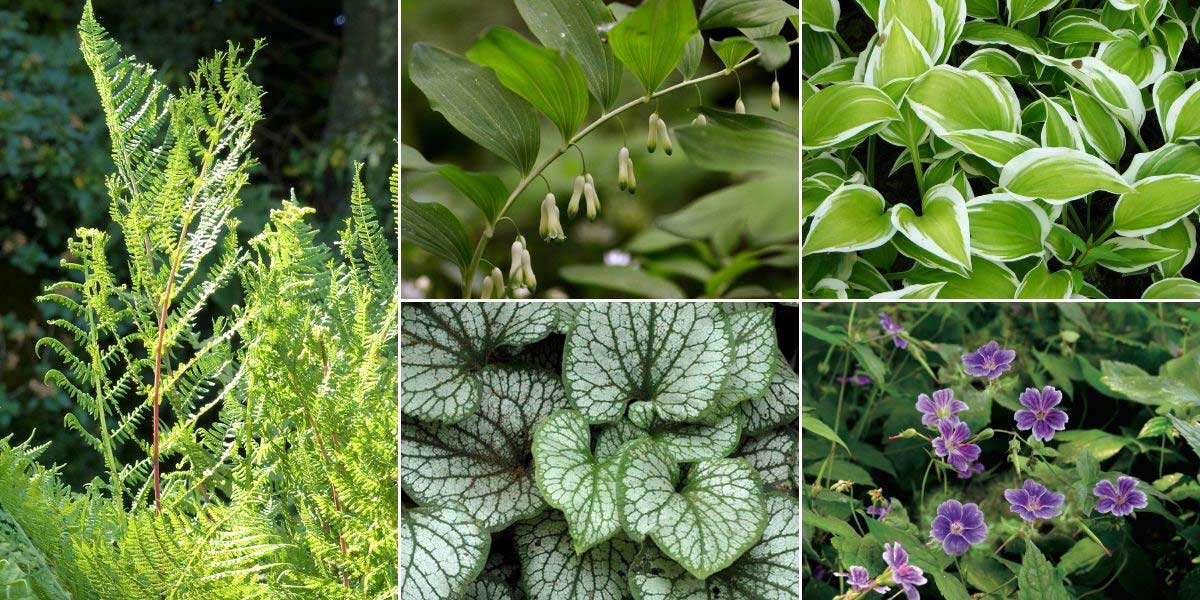
Athyrium is ideal for a woodland garden with a very natural style. Here, Athyrium filix-femina ‘Lady in Red’, Polygonatum multiflorum (photo Radio Tonreg), Hosta ‘Emily Dickinson’, Brunnera ‘Jack Frost’, and Geranium nodosum ‘Clos du Coudray’
The Athyrium niponicum is perfect for a contemporary, very graphic garden. Its small triangular, silver fronds add a chic, design effect! Pair it with structural plants like horsetails, bamboo, or topiary boxwoods… Also consider ornamental garlic, such as Allium sphaerocephalon, which bears small purple pom-poms atop its stems. You can also incorporate Gaura lindheimeri for its airy flowering. Preferably choose a white-flowered variety, like ‘Snowbird’.
The Athyrium niponicum will also find its place in a cool, shaded rockery, alongside Lamium, Corydalis, Ajuga reptans, Saxifrages… You can integrate other ferns, such as Polypodium vulgare or Coniogramme emeiensis. Take advantage of the fine foliage of grasses to add lightness, for example by choosing Carex morrowii ‘Ice Dance’, which has green leaves variegated with cream white.
Useful resources
- Discover our range of Athyrium as well as our stunning collection of ferns
- Our comprehensive guide – Ferns: planting and growing
- Fernatic, the French site for fern enthusiasts
Frequently asked questions
-
Can I grow Athyrium in calcareous soil?
It can tolerate chalky soils but will thrive much better in slightly acidic or neutral soil! If your soil is chalky, we recommend digging a planting hole that is wide enough, then installing a geotextile fabric and filling it with a mixture of potting soil and heather soil. You can also grow Athyrium in a large pot or container with suitable substrate!
-
Can Athyrium become invasive in my garden?
No! Even though Athyrium niponicum has a running rootstock and spreads a little over time, it never becomes invasive.
-
Should I protect it from the cold in winter?
Athyrium is a hardy plant; however, it is best to leave the dried fronds on the stump for winter and only cut them back in spring. In any case, it does not require further protection, as it can withstand temperatures between -20 and -30 °C.
- Subscribe!
- Contents
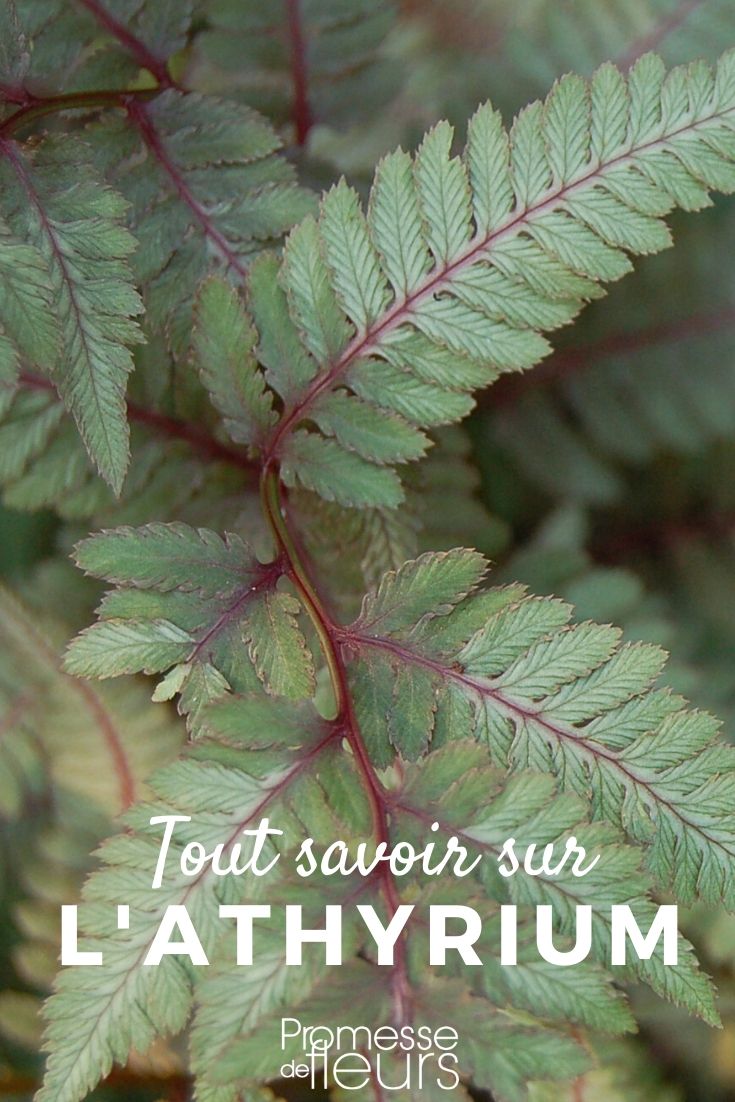































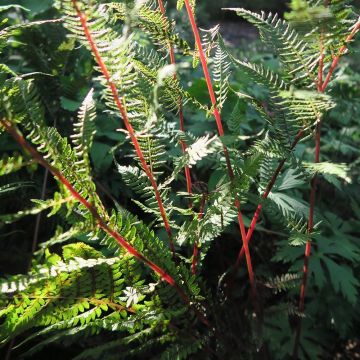
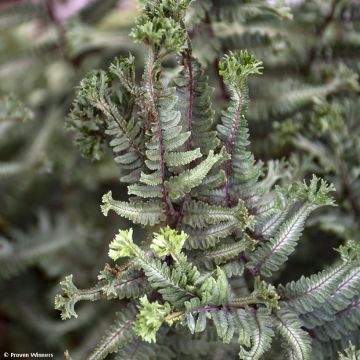



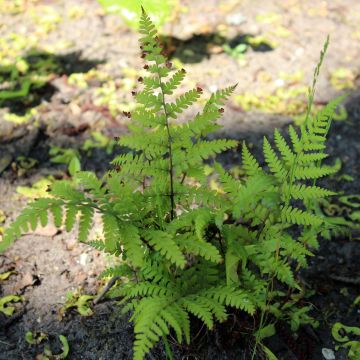
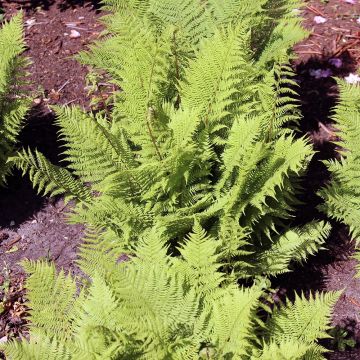
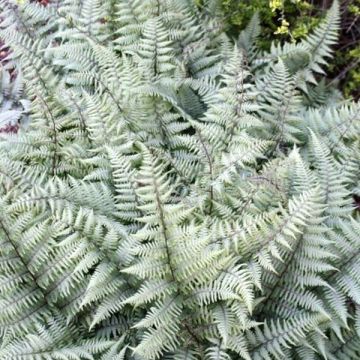
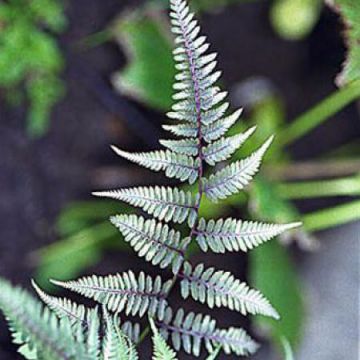
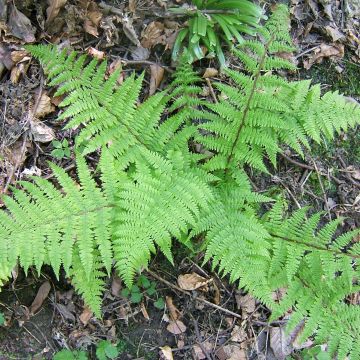
Comments